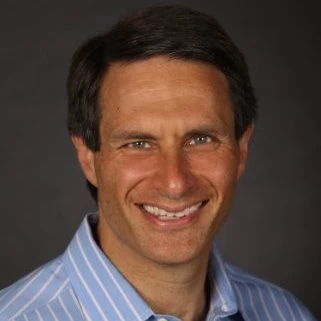A child’s sudden death leads data scientists on a quest for answers
August 31, 2017

Last year John Kahan decided he wanted to climb Mount Kilimanjaro.
It was an uncharacteristic decision for Kahan, a native New Yorker who says his usual idea of roughing it is “staying at a Courtyard by Marriott,” but it hearkened back to the saddest day of his life.
The timing corresponded with what would have been the 13th birthday of his son Aaron Matthew, who had died hours after birth of what’s become known as SIDS, or Sudden Infant Death Syndrome. Medically speaking, there was no explanation for his death, even after an autopsy.
Lacking an explanation, Kahan, the General Manager for Customer Data and Analytics at Microsoft, did “what most human beings do in these circumstances.” He tried to find some answers, and donated (and matched) funds to SIDS related charities at Seattle Children’s Hospital where Aaron was born.

But then, as the day that would have been Aaron’s 13th birthday — an important one in his Jewish faith — approached, “Something kind of snapped in my head,” Kahan said. He set out to raise $13,000 for SIDS research by climbing Africa’s highest and most famous mountain. He reached the peak on June 29, 2016.
When he returned, the team of data scientists who work for Kahan at Microsoft had a surprise for him that would prove to have much more impact on SIDS research than the money and awareness Kahan had generated on his own.
While he was away, they’d been using Microsoft’s analytics and cloud computing resources — tools like Power BI and the Azure cloud computing platform — to examine data on births and infant deaths collected by the U.S. Centers for Disease Control.
“The CDC has this huge data set that’s been gathered over the last 15 years. This is the great news. The challenge is that this is more geared to Big Data skills and not traditional researchers. Thus, it wasn’t being used to its fullest. There was also additional data from six hundred families that another parent put together that wasn’t be used at all,” Kahan said.

The effort was led by Juan Miguel Lavista, a principal data scientist who works for Kahan. “We wanted to find a way to give back that involved more than just donating money. When we found this data, we realized that analysis of it would be similar to the types of problems we work on every day. It’s data science,” Lavista said. But there was another reason: At the time he started working for Kahan in 2013, Lavista was also the father of a week-old baby girl. The story of Kahan’s loss thirteen years earlier resonated powerfully with him.
The team of 20 data scientists started meeting with doctors and researchers at Seattle Children’s Hospital, including Dr. Daniel Rubens and Nino Ramirez Ph.D., , to explain their effort and some of their findings. The SIDS researchers’ reactions were immediate.
“First, we had independently found correlations in the data that were already known,” Lavista said. That demonstrated they were investigating something meaningful. “Then, we had found some correlations in the CDC data that they didn’t know about, and they got very interested.”
In June, Kahan’s team donated this powerful set of tools to Seattle Children’s. Researchers there may now visually explore existing data on SIDS to find new insights and develop new hypotheses about what causes it. Microsoft Philanthropies donated Azure cloud services to power the tools, and as a result, aid medical research. And because Microsoft’s employee giving program pays nonprofits for each hour an employee volunteers (up to $15,000 a year), Kahan’s team generated over $11,000 while working on the project. All told, Kahan has helped raise $250,000 for SIDS research so far.
Kahan and Lavista will be delivering the opening keynote at the 2017 Data for Good Exchange on Sunday, September 24th, about their team’s efforts and breakthroughs in research that have resulted from using publicly available data to try solving the mysteries of SIDS and the broader category of Sudden Unexpected Infant Death (SUID).
Kahan told us that data scientists have an important role to play in using their skills to help increase understanding of the world’s problems. “It doesn’t have to be about this problem in particular. Choose your area. Partnerships in these spaces are needed.”
Register now for the 2017 Data for Good Exchange. We encourage you to invite colleagues who may wish to attend.